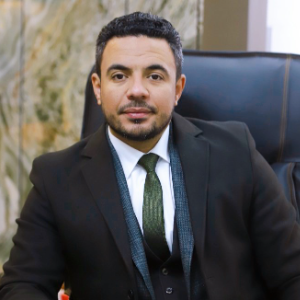Title : The delayed severely mangled limb; Salvage versus amputation (Case Study)
Abstract:
Aim: To evaluate the decision taken guided by the mangled extremity severity Score (MESS) in case of severely mangled extremity injuries.
Methods: The (MESS) score is an accurate predictor scoring system that can be applied to mangled extremities which based on 4 parameters: skeletal/soft-tissue injury, limb ischemia, shock and age. Shock and age are rated with a score of 0-2 each, skeletal/soft-tissue injury with a score of 1-4 and limb ischemia with a score of 0-3 (score doubled for ischemia > 6 h). Afterwards the scores of the different parameters are summed. The MESS score ranges from 1 to 14. The MESS score greater than or equal to 7 had a 100% predictable value for amputation.
Results: Male patient 18 years old comes to emergency room after road traffic accident with MESS score was 7 ((crush injury, fracture distal femur and proximal both bone leg with extensive soft tissue damage and total skin loss (3), shocked and intubated after Severe bleeding and peripheral circulatory collapse (1), sever ischemia after 1hour from accident, Pale and cold foot with absent distal pulsation (3), age (0) )). The patient admitted to intensive care unit to correct the haemodynamic condition and the trauma team surgeons decided limb salvage if patient become stable before 6 hours otherwise an amputation is necessary. The patient became stable and ready for any surgical intervention after 18 hours, but the MESS score became (9) and theoretically the decision is amputation but the surprise was in stationary not worsen local clinical examination and his relatives refuse decision of primary amputation regarding to young age of the patient
A trial for vascular exposure and repair was done with high risk consent for early or late major complications. Arteriogram was done intraoperative which revealed cutoff at distal SFA and tibio-peroneal trunk.Interposition graft of contralateral GSV was done after external fixator placed by orthopedic team.The distal pulsation was successfully regained and complementary fasciotomy was done to avoid compartmental syndrome with application of Vacuum Assisted Closure on fasciotomy site.
Follow up with strict monitoring to avoid ischemic reperfusion injury syndrome through a multidisciplinary team, Patient discharged from ICU to the ward with good muscle perfusion, audible distal pulsations and warm foot. After 45 days of first operation, patient can walk with external fixator which removed after 6 months and he can walk again with mild support, after another 3 months patient can walk without any support, only foot drop was the end results of nerve injury.
Conclusions: Despite the direction of MESS score towards amputation, the clinical condition of the limb played a crucial role to salvage it which requires reviewing some points of debate again.



